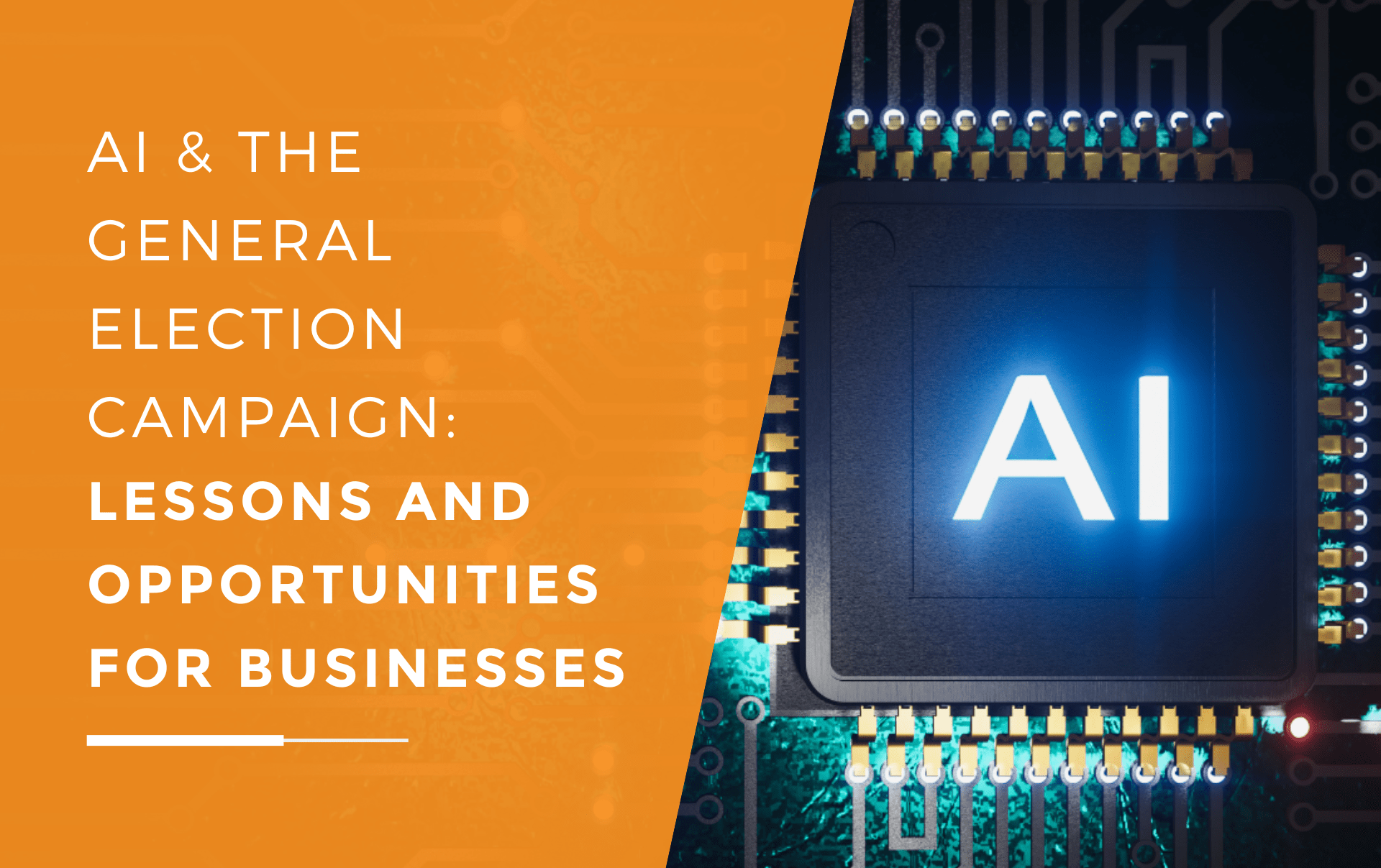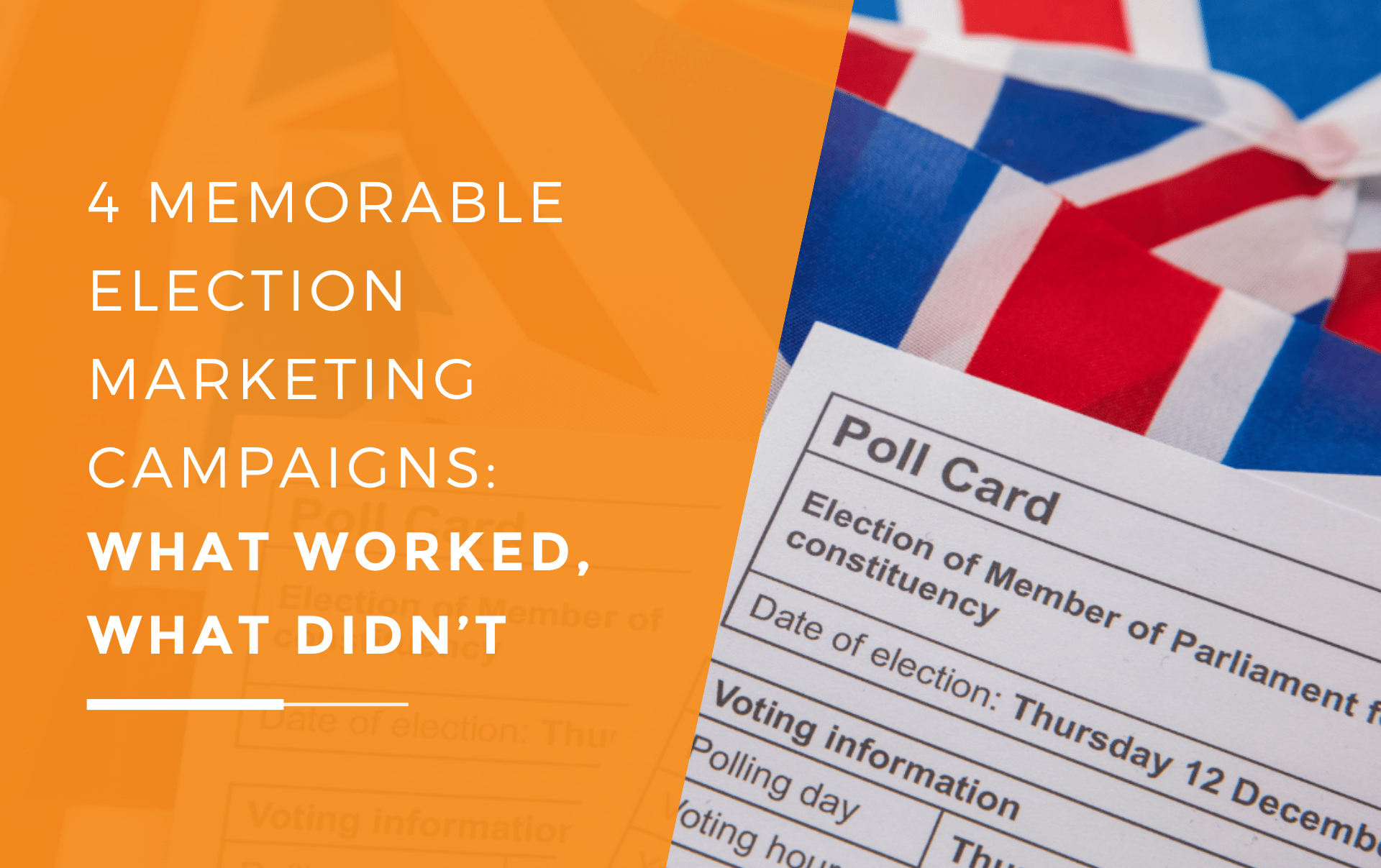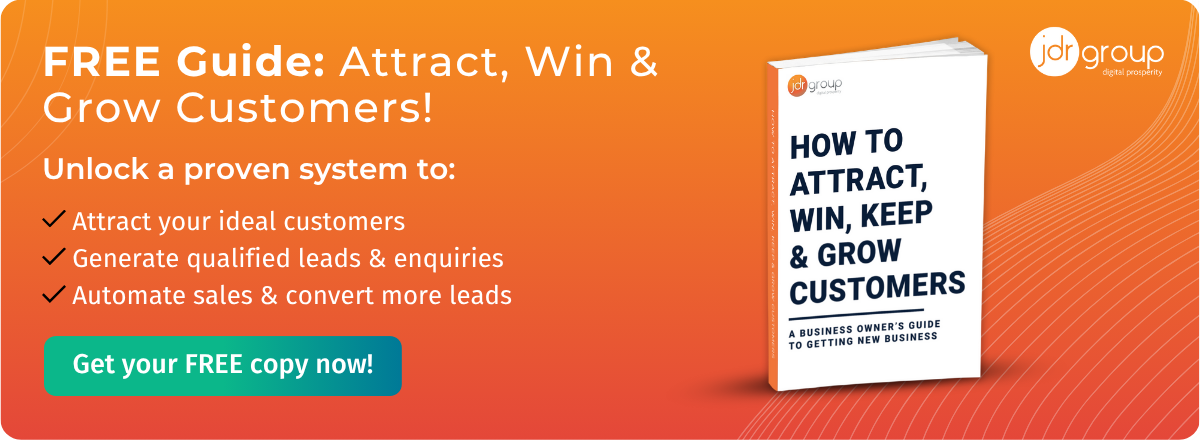Marketing Insights From The General Election For Small Businesses
by Will Williamson on 26-Jun-2024 09:20:34

Political campaigning and business marketing are two different beasts. However, the marketing strategies used by candidates and parties during a general election can provide valuable insights for small businesses, and general elections also sometimes act as a testing ground for new marketing channels and technologies.
A good example of this – from the USA – is how the Barrack Obama election campaigns of 2008 and 2012 accelerated the adoption of social media marketing and YouTube by businesses around the world, making a fringe technology suddenly more acceptable to mainstream enterprises.
Campaigning Versus Marketing: The Differences
The surface similarities between campaigning and marketing (political campaigning seeks to ‘drive votes’, while marketing seeks to ‘drive sales’) mask some important differences. The main difference is that political campaigning is issue-based and value-based, with an emphasis on emotionally charged messaging. Business marketing, on the other hand, generally focuses on the benefits, value, and features of a product or service, emphasising a value proposition or solution to a customer’s problems.
Politics is also a largely ‘grassroots’ affair, with campaigns focused on building street level personal support for various issues and candidates. Modern business marketing is less overt, taking place largely online and in a less intrusive way – personal endorsements are less important than sales and relationships.
So, what can businesses take away from political campaigning? Are there any lessons or tactics that could enhance your marketing campaigns?
The Power Of Messages
General election campaigns bring home the value of clear and compelling messages to resonate with voters/customers on an emotional level. All the parties use strong and concise messages to summarise what they stand for and to maximise memorability. Unlike many marketing strap lines, most political messages are ready made memes, hashtags, and slogans. They make your elevator pitch sound like a novel.
For example, the Conservative party’s campaign messages are usually condensed to stability and economic growth. Their 2024 slogan is “Clear plan, bold action, secure future”, while the concise message of the 2019 election was a simple “Get Brexit done.”
Tip: some business USPs can be distilled into a few words, while others can’t. The important takeaway is to think about developing a set of core brand messages that clearly communicates what makes your businesses unique, and why your customers should choose you. This message should then be used consistently across all your marketing channels.
Grassroots Engagement
Direct engagement with the public, whether in person or through social media, is one of the hallmarks of political campaigning. The Liberal Democrats, for example, often engage in town hall meetings and local community events to encourage direct interaction with voters, and the Labour Party are strong advocates of social media – especially Twitter/X – as a channel for engaging younger voters by encouraging shares and making use of hashtags.
Grassroots engagement doesn’t play as prominent a role in business marketing, but there are still useful crossovers to explore.
Tip: the digital first economy has not replaced direct engagement. There is still a place in B2B and B2C marketing for events, workshops, and even Q&A sessions to connect with your customer base. These can be held in person, but are just as effective when hosted through a digital channel, such as Facebook Live. Ad hoc video content created through a platform like Vidyard is another good way of putting a human face to your business and engaging with your customers directly on a personal and emotional level.
Data-Driven Campaigning
Modern elections are increasingly driven by data, and some of the customer profiling strategies now used in digital marketing – such as Ideal Customer Profiles and Buyer Personas – have their origin in voter profiles for general elections. You may remember “Pebbledash People” and “The Wristband Generation” from the 2005 General Election, or the “Motorway Man” from 2010?!
Tip: Data is as important to political campaigners in 2024 it was back then, and there is a clear crossover with marketing. By using behavioural and demographic data to understand the concerns and motivations of your target buyers, you can personalise your content to resonate more strongly with specific segments. This is a strategy used by the Green Party to tailor their climate change messages to regional issues and can also be used by businesses to strengthen engagement in target localities, and increase uptake for particular products and services.
Next Steps
To find out more about digital marketing and how it can support and grow your business, please contact JDR today by clicking here.
Image Source: Canva
- Inbound Marketing (SEO, PPC, Social Media, Video) (827)
- Strategy (366)
- Sales & CRM (195)
- Marketing Automation & Email Marketing (190)
- Business Growth (165)
- Website Design (160)
- Hubspot (138)
- Lead Generation (116)
- Google Adwords (99)
- Content Marketing (94)
- Conversion (51)
- Case Studies (47)
- News (47)
- Ecommerce (39)
- Webinars (34)
- SEO (25)
- AI (20)
- Events (19)
- LinkedIn Advertising (17)
- Video (17)
- Video Selling (15)
- Software training (13)
- Niche business marketing (11)
- The Digital Prosperity Podcast (10)
- Facebook Advertising (6)
- HubSpot Case Studies (5)
- January 2026 (1)
- December 2025 (15)
- November 2025 (6)
- October 2025 (17)
- September 2025 (16)
- August 2025 (14)
- July 2025 (14)
- June 2025 (5)
- May 2025 (19)
- April 2025 (15)
- March 2025 (13)
- February 2025 (13)
- January 2025 (8)
- December 2024 (2)
- November 2024 (4)
- October 2024 (21)
- September 2024 (4)
- August 2024 (8)
- July 2024 (14)
- June 2024 (16)
- May 2024 (25)
- April 2024 (15)
- March 2024 (18)
- February 2024 (5)
- January 2024 (10)
- December 2023 (6)
- November 2023 (10)
- October 2023 (13)
- September 2023 (12)
- August 2023 (14)
- July 2023 (13)
- June 2023 (14)
- May 2023 (15)
- April 2023 (13)
- March 2023 (14)
- February 2023 (13)
- January 2023 (15)
- December 2022 (13)
- November 2022 (6)
- October 2022 (8)
- September 2022 (22)
- August 2022 (15)
- July 2022 (13)
- June 2022 (16)
- May 2022 (14)
- April 2022 (16)
- March 2022 (17)
- February 2022 (11)
- January 2022 (8)
- December 2021 (6)
- November 2021 (7)
- October 2021 (11)
- September 2021 (10)
- August 2021 (7)
- July 2021 (7)
- June 2021 (4)
- May 2021 (4)
- April 2021 (1)
- March 2021 (3)
- February 2021 (5)
- January 2021 (4)
- December 2020 (7)
- November 2020 (6)
- October 2020 (5)
- September 2020 (9)
- August 2020 (18)
- July 2020 (17)
- June 2020 (17)
- May 2020 (10)
- April 2020 (21)
- March 2020 (24)
- February 2020 (21)
- January 2020 (12)
- December 2019 (23)
- November 2019 (12)
- October 2019 (14)
- September 2019 (16)
- August 2019 (15)
- July 2019 (13)
- June 2019 (6)
- May 2019 (8)
- April 2019 (4)
- March 2019 (2)
- February 2019 (2)
- January 2019 (2)
- December 2018 (3)
- November 2018 (24)
- September 2018 (11)
- August 2018 (9)
- June 2018 (3)
- May 2018 (6)
- April 2018 (14)
- March 2018 (12)
- February 2018 (16)
- January 2018 (15)
- December 2017 (15)
- November 2017 (18)
- October 2017 (23)
- September 2017 (19)
- August 2017 (28)
- July 2017 (27)
- June 2017 (25)
- May 2017 (18)
- April 2017 (17)
- March 2017 (16)
- February 2017 (17)
- January 2017 (14)
- December 2016 (21)
- November 2016 (27)
- October 2016 (25)
- September 2016 (16)
- August 2016 (20)
- July 2016 (19)
- June 2016 (14)
- May 2016 (20)
- April 2016 (24)
- March 2016 (22)
- February 2016 (28)
- January 2016 (27)
- December 2015 (28)
- November 2015 (19)
- October 2015 (9)
- September 2015 (12)
- August 2015 (5)
- July 2015 (1)
- June 2015 (10)
- May 2015 (3)
- April 2015 (11)
- March 2015 (14)
- February 2015 (15)
- January 2015 (12)
- December 2014 (2)
- November 2014 (23)
- October 2014 (2)
- September 2014 (2)
- August 2014 (2)
- July 2014 (2)
- June 2014 (7)
- May 2014 (14)
- April 2014 (14)
- March 2014 (7)
- February 2014 (2)
- January 2014 (7)
- December 2013 (9)
- November 2013 (14)
- October 2013 (17)
- September 2013 (3)
- August 2013 (6)
- July 2013 (8)
- June 2013 (4)
- May 2013 (3)
- April 2013 (6)
- March 2013 (6)
- February 2013 (7)
- January 2013 (5)
- December 2012 (3)
- November 2012 (2)
- September 2012 (1)
Subscribe by email
You May Also Like
These Related Blogs

AI & The General Election Campaign: Lessons And Opportunities For Businesses
The UK’s 2024 general election will be historic for at least one reason. For the first time, AI is playing a major role in election communications and …

4 Memorable Election Marketing Campaigns: What Worked, What Didn’t
Whatever your opinions on politics, it’s hard to avoid the onslaught of political advertising in the UK at the moment, in the run-up to the general el …

Can You Use Inbound Marketing for Recruitment?
Most businesses that use inbound marketing do so to drive sales, and it’s undoubtedly one of the best revenue-generating strategies of the digital age …




